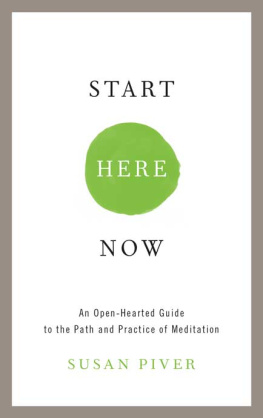Susan Lukas - Where to Start and What to Ask
Here you can read online Susan Lukas - Where to Start and What to Ask full text of the book (entire story) in english for free. Download pdf and epub, get meaning, cover and reviews about this ebook. year: 1993, publisher: W.W. Norton, genre: Romance novel. Description of the work, (preface) as well as reviews are available. Best literature library LitArk.com created for fans of good reading and offers a wide selection of genres:
Romance novel
Science fiction
Adventure
Detective
Science
History
Home and family
Prose
Art
Politics
Computer
Non-fiction
Religion
Business
Children
Humor
Choose a favorite category and find really read worthwhile books. Enjoy immersion in the world of imagination, feel the emotions of the characters or learn something new for yourself, make an fascinating discovery.

- Book:Where to Start and What to Ask
- Author:
- Publisher:W.W. Norton
- Genre:
- Year:1993
- Rating:4 / 5
- Favourites:Add to favourites
- Your mark:
- 80
- 1
- 2
- 3
- 4
- 5
Where to Start and What to Ask: summary, description and annotation
We offer to read an annotation, description, summary or preface (depends on what the author of the book "Where to Start and What to Ask" wrote himself). If you haven't found the necessary information about the book — write in the comments, we will try to find it.
Where to Start and What to Ask — read online for free the complete book (whole text) full work
Below is the text of the book, divided by pages. System saving the place of the last page read, allows you to conveniently read the book "Where to Start and What to Ask" online for free, without having to search again every time where you left off. Put a bookmark, and you can go to the page where you finished reading at any time.
Font size:
Interval:
Bookmark:
For Kit, Megan and Gaby
who make anything seem possible
I am grateful to many people for their help with this book. To my three student readers: Diana Manchester, Tracy Vandenbergh, and Deirdre Maloney. To Maurice Elias, of the Rutgers University Department of Psychology, for his kindness to a stranger. To Susan Donner, Director of Field Placement at Smith College School of Social Work for her thoughtful and astute comments. To Judith Rosenberger of the Hunter College School of Social Work for her enthusiasm and encouragement and for allowing me the benefit of her students observations. To my publisher and editor, Susan Barrows Munro of W.W. Norton and Company, for her guidance, her vision, and most of all, her regard for writers and the written word.
Professionally, I have the good fortune to be surrounded by caring, dedicated clinicians. At the Jewish Board of Family and Childrens Services I am especially grateful for Patricia Nitzburgs insight, her wit, her forbearance, and her steady hand on the tiller, and for Annaclare Van Dalens goodness, her brilliance, her profound understanding of human emotion, and her belief in me when I need it most. These two women and Emily Shachter-whose wisdom and style I treasure-personify the professional standards to which I continue to aspire.
Finally, I wish to acknowledge my abiding debt to Professor Charles Guzzetta of the Hunter College School of Social Work who, from my first day in academia to the moment of this writing, remains an inspiration. Without his intellectual rigor, his dedication to teaching and learning, his spirit of generosity, and his good old-fashioned work ethic, this book might never have been written.
OF THIS BOOK: AN INTRODUCTION
W ithin a few weeks after I began my field placement as a social work student in an MSW program, I asked my supervisor what he thought was the most essential feature of being a good beginning clinician. First of all, he said, you gotta know your customer. Glib as that phrase may sound, it embodies the highest principles of sound practice and useful intervention.
Further, by helping me to focus on where to begin, it helped me not to feel anxious all the time, which is the way I felt on the day I asked my supervisor that question, and which is the way I quickly discovered most of my fellow students also felt. To be sure, some of that anxiety is unavoidable; some of it is quite useful in making sure that we dont overstep our knowledge or authority and that we turn to our supervisors for guidance.
The degree to which we are able to present those supervisors with factual information about our clients, accomplish that information-gathering in a concise, thorough, and systematic way-which should also help diminish some of your anxiety.
The book is not going to provide you with all the answers. It will provide you with numerous questions and describe the situations in which they might be asked. That does not mean that you are going to direct all of them to the client. Some you are going to ask of yourself after an interview. Some you are going to discuss with your supervisor. Some you may never have occasion to ask. The idea of this book is simply to have them available to you when and if you need them.
The time at which you are likely to need these questions most is whats known in clinical parlance as the assessment phase. The purpose of the assessment phase is to help you and of the client, a sense of the underlying pathology (if any), and some preliminary judgment as to whether or not there is a match between the kinds of services your agency provides and the prospective clients needs.
No doubt this last paragraph has raised far more questions in your mind than it has answered, first and foremost of which is: Am I going to be expected to do this on my own? And the answer is no. You will get a great deal of help, most of all from your supervisor. In addition, much of the content of your courses will be aimed specifically at assisting you in making these judgments.
Unfortunately, little of this may occur before you actually start interviewing clients. And even after you start getting supervision, it is almost impossible to get as much help as you feel you need. Why?
First, because supervisors are busy people. They have their own case loads and frequently have other administrative responsibilities, as well as supervision of other students and staff, so they have to remember a great deal about many cases. In addition, your time with your supervisor will be limited by your own schedule, so it is crucial for you to provide as much information as possible in the limited time you have together.
Second, unless yours is an agency that permits you to audiotape your interviews (and this practice raises some thorny ethical and clinical issues), it is unlikely that your supervisor will ever know exactly what happened in an interview. You may write a process recording which recounts some, or maybe even most, of what was said, maybe even how you felt or rely heavily on the information you provide.
So, for a while you are going to feel a great deal of anxiety when you start an interview. You are going to be worrying about what youre supposed to do or say next, at the same time as you are trying to listen, look, think, pay attention to what you are feeling, and make some sense out of all of it. In short, you are going to have to learn to tolerate the feeling of not knowing.
If that sounds abstract or philosophical, be assured that it is not. You are immediately going to be confronted in your interviews with clients who are in pain, who frequently have experienced unthinkable deprivations in their life, and who want-or appear to want-answers. And you are going to feel an intense desire to act, to do, to be reassuring and to say something that will instantaneously make them feel better. So why not do it?
The answer to that question is quite straightforward. In most cases, you dont know the person to whom you are listening. You may have read a file on that person. You may have been given some information about his background. But you have no idea what makes him tick. You may have some hunches, but you dont know what his life is like, what comforts him, what frightens him. Therefore, you have no way of judging how your client will use the information or advice you might be inclined to offer. In the best case, your helpful comments might be ignored or give false reassurance in a situation that needs to be better understood. In the worst case they may be dangerous to him or those around him. The purpose in saying this is not to scare you; it is to move you in the direction of thinking about each client as unique, of recognizing that the human psyche is subtle, complex, and to be regarded with the utmost respect.
Having said all this, having posed these dilemmas and restrictions on the help you can obtain from others, we come to why this book has been written. It is intended to help you resist the impulse to formulate premature hypotheses, to help you withstand some of the feelings of helplessness and frustration that come from waiting and not knowing, and to give you some guidelines for discovering who the person sitting before you really is. It is going to give you some direction for conducting different types of interviews, as well as some standardized tools for making an assessment. It will point you in the direction of what you need to know and how to discover it and give you some clues as to where to look next. All this is intended to help you produce a document that you, your supervisor, and the treatment team can use to answer one crucial question: How do you respond to this particular client in a way that is truly therapeutic?
Before we begin the assessment phase, a few more words about the book and its orientation. First, it is written as if you were working in a community mental health clinic serving a culturally and ethnically diverse population of men, women, and children. Therefore, you may find at times that you need to adapt the material to your clinical setting and the unique circumstances and characteristics of your clients.
Next pageFont size:
Interval:
Bookmark:
Similar books «Where to Start and What to Ask»
Look at similar books to Where to Start and What to Ask. We have selected literature similar in name and meaning in the hope of providing readers with more options to find new, interesting, not yet read works.
Discussion, reviews of the book Where to Start and What to Ask and just readers' own opinions. Leave your comments, write what you think about the work, its meaning or the main characters. Specify what exactly you liked and what you didn't like, and why you think so.










